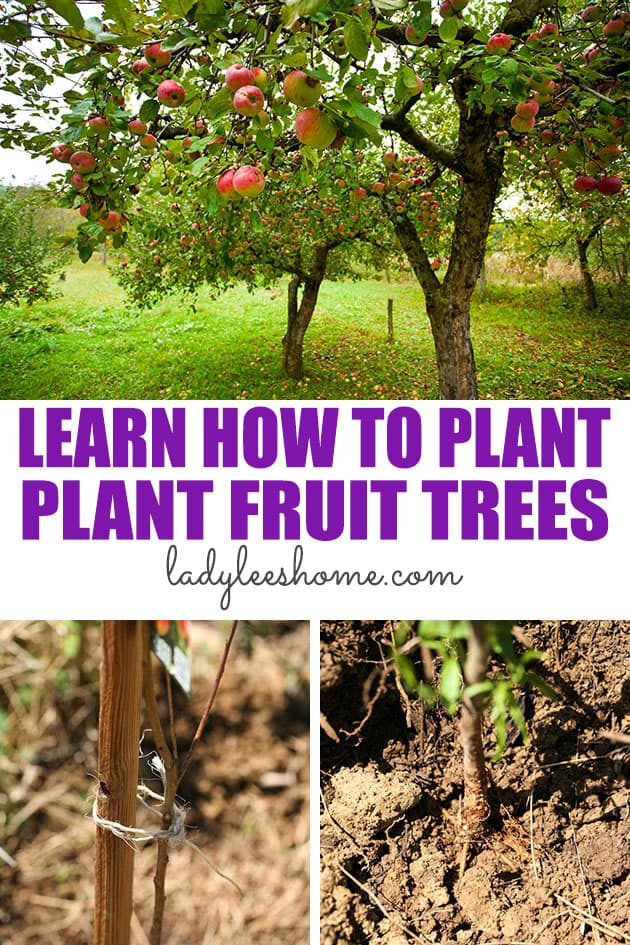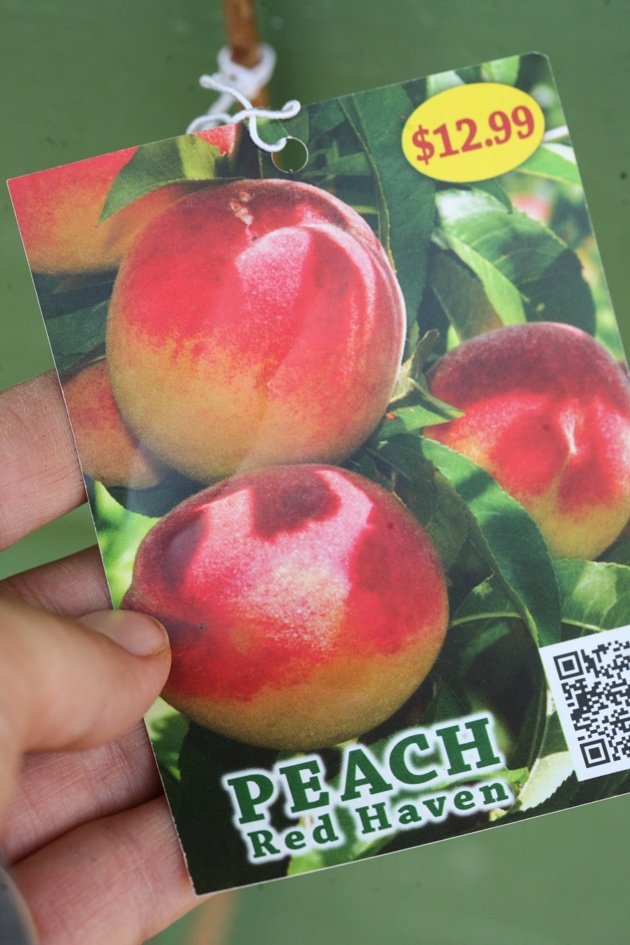Learn when, where, and how to plant fruit trees to ensure that your trees take off right after planting and grow strong. Planting fruit trees the right way is a very important step in growing a productive and healthy orchard!
”Mommy, I’m hungry”. I swear I’ve heard this sentence more times than I’ve heard the guineas screeching… And those guys don’t shut up EVER so it’s saying something.
My kids are hungry every 30 minutes. My seven-year-old boy will eat me if I let him! In the beginning, I was trying to be a good mama. I’d ask, “what would you like me to make for you? Do you want this or that?”
But very quickly I realized that if this continues (and the rumors say it’s going to get worse as they grow…) I’ll be spending the next 16 years in the kitchen. Ain’t gonna happen. Period.
How to Plant Fruit Trees…
So now when I get the mommy-I-am-hungry thing I have a very simple answer… Grab an apple! Or a banana, or a peach, or an orange… Whatever fruit we have, just grab it and go on. My kids eat fruit all day every day. I do think it’s the best snack, but it’s not the cheapest…
So I was thinking that this is a great reason (among other great reasons) to start planting fruit trees. Maybe, in a few short years, I’ll be able to send them to pick their fruit from our trees instead of grabbing it from the fridge.
Not to mention how amazing it will be to have my own fruit to make mulberry jam, fig jam, peach jam, plum and apple jam, and all the other jams in the world!
Now, I wish we could grow fruit like we grow vegetables… Plant, grow, harvest, repeat every year, and learn from our mistakes as we go. But with fruit trees, since it takes some time until you actually get to harvest and enjoy your fruit, and since you can’t just pull them up and plant again, it takes some research, and knowledge, to set up your orchard the right way. In this case, it’s better if we try to do this right the first time.
Table of Content…
- Where to buy Fruit Trees?
- Bare Root or Potted Fruit Trees?
- Where to Plant Fruit Trees?
- When to Plant Fruit Trees.
- How to Plant Fruit Trees.
- Caring For Newly Planted Fruit Tree.
Where to Buy Fruit Trees?
I wrote a whole post about how to choose and buy the right fruit tree and if you feel that you don’t have a solid understanding of how to choose fruit trees, it’s really important that you read that post. In a nutshell, here are the five steps…
- Step 1 – Determine Your Growing Zone and Climate.
- Step 2 – Determine What Size of Tree You Want.
- Step 3 – Choose a Self-Pollinating or Cross-Pollinating Tree.
- Step 4 – Buying Bare Root vs. Potted Fruit Tree.
- Step 5 – Harvest Intervals and Choosing the Varieties You Want to Grow.
It’s so so so important that you pay attention to your growing zone, pollination, and the varieties that you choose to grow. These are not things that you’ll be able to change later (although you can always graft fruit trees but do try to get it right in the beginning, it will save you a lot of headaches later).
There are great online nurseries like Grow Organic, Stark Bros, Fast Growing Trees, and so on. If you purchase from an online nursery, you are probably going to get a young, bare root fruit tree. If you buy a fruit tree locally, you are probably going to get a potted fruit tree. We’ll learn how to plant both, but let’s first get a better understanding of the difference…
Bare Root or Potted Trees?
Potted trees – a potted fruit tree probably started as a field grown tree in a large nursery. It was dug out of the soil while still very young, its roots were pruned and it was then planted in a container before being shipped to another nursery.
Those trees are very often root-bound; the roots have nowhere to go and so they go around and around. This root structure is unhealthy and can affect the tree for many years even if you try to correct it at planting.
The advantages are that those trees are usually available for purchase year-round and there is no rush to plant them.
Bare root fruit trees – these trees grow in living soil, or in other words, right there in the field until they are ready to be dug. Once the nursery digs them, they prune the roots and bag them.
This tree has a better root structure where the roots are spread out and not bound. Since it was grown in living soil, the roots had the opportunity to engage in a healthy relationship with fungi and beneficial bacteria in the soil. This usually results in a resilient, strong, and fibrous root system.
The disadvantage here is that this tree cannot be set on display. It is dug out of the field when it’s dormant and is kept in moist sawdust until sold which should be rather quickly. It then has to be planted quickly as well (although you can keep it in moist sawdust for a little while if the ground is frozen when you get it. More on this below).
When you buy a bare root tree online, you can be sure that it was dug out of the field not long before it was shipped to you. When you get a potted tree from a local store there is no knowing how long that tree has been on the road. It doesn’t mean that a potted tree is a bad one. I know many gardeners that have great success with trees that they bought locally. It’s just something to keep in mind.
Where to Plant Fruit Trees?
Plant fruit trees in full sun (at least 8 hours a day), and, depending on the size of your tree, you will have to consider spacing… Of course, you need to consider where YOU want your trees…
Are you going to plant your trees in organized rows? Do you want to be able to mow between them? Do you want to plant them alongside the driveway so you can harvest right into the bed of your pick-up truck?
Do you want them mixed up or do you want an area for apples and an area for peaches and an area for cherries? Do you want them close to the house or further away? It’s all up to you…
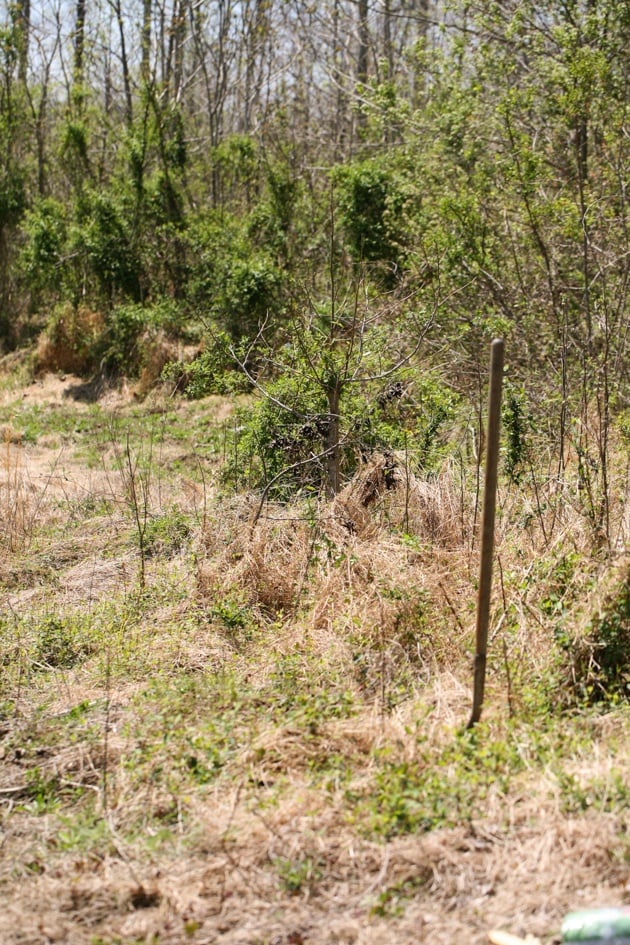
In the beginning, I thought that I would have my trees in nice rows, spaced in a way that I can mow between them. But I’ve been learning a bit about permaculture lately and not only doI love the idea of letting things grow wild and natural, but I also love the idea of reducing the need for maintenance.
I decided that it would make more sense to me to take advantage of areas on my farm that I am not able to do much with anyway rather than taking valuable field space where I can graze animals and grow vegetables.
I decided that I wanted my trees to blend in with the wild, untamed land around them but still have easy access to them for picking. The area in the picture above is alongside where I want to have a driveway in the future. It’s flat, it needs a bit of cleaning but there are no large trees there and there is plenty of sunlight.
When to Plant Fruit Trees…
In the spring or in the fall. You’ll find bare-root trees shipped by online nurseries in early spring because they are dug out of the field at the end of winter.
You can’t hold onto them, you’ll have to plant them right away which means you’ll probably plant them in spring.
You can probably find container trees in some stores year-round, the trees can simply keep growing in the container, but make sure you plant those in the ground during either spring or fall. Summer will be way too hot for the new tree to handle and winter will simply be too cold unless you live in a very warm climate like Arizona, Texas or Florida.
In the past, I’ve lost a few trees that I planted in the fall simply because they were too young to handle the cold weather so if you decide to plant in the fall, you might want to make sure that you protect your tree. This can be done by setting a fence around it and filling it with dry leaves or straw which will add a layer of insulation and should help when temperatures are low.
How to Plant Fruit Trees…
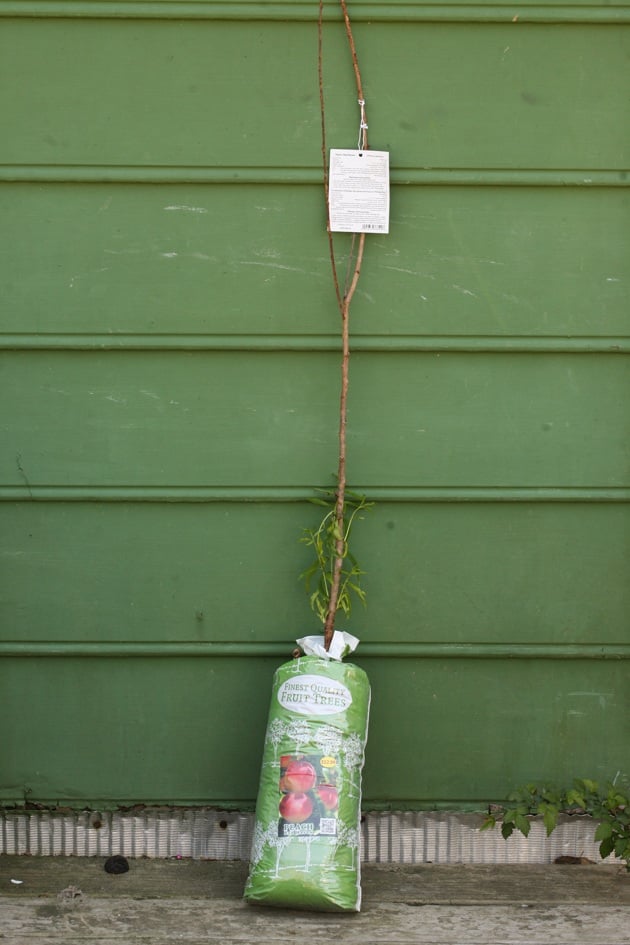
This peach tree came in a bag (a bare-root tree). Once you receive your tree, you’ll have to prepare it for planting…
Step 1 – Remove the Tree From the Bag or Container…
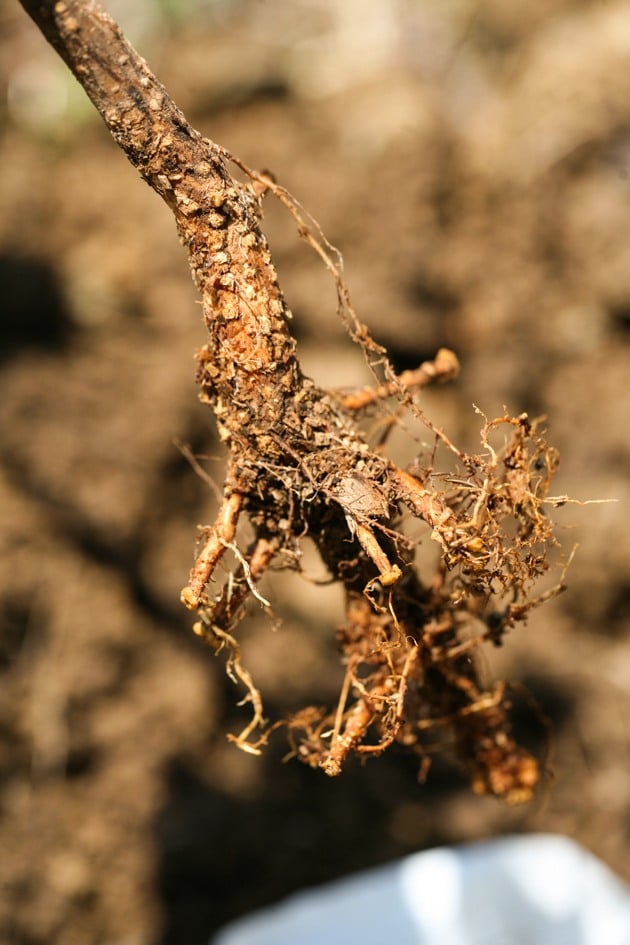
Trees that are bare-root are packed in wet sawdust usually. They can’t keep growing in it so once you get your tree you have to plant it within a couple of weeks. After you remove the tree from the bag, you can see how they pruned the roots of the tree before packing and shipping it. The roots will be short and pointing in different directions.
If you purchased a container tree, once you remove it from the container for planting you’ll notice that the roots hold the soil in the shape of the container, take a knife and cut vertically into the soil and roots to break the circle the roots made on the inside of the container. Then plant it as I demonstrate with this peach tree here.
Step 2 – Figure Out Planting Depth…
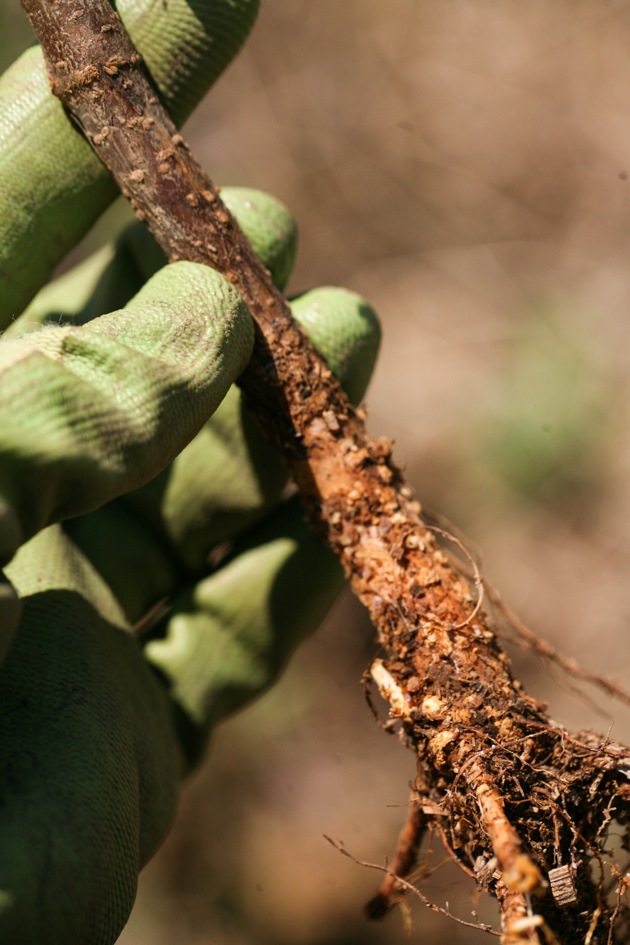
The depth of planting is very important with fruit trees, if you plant them too deep you can actually drown them. Also, most fruit trees are grafted. This means that the main stem is manually connected to a strong rootstock to ensure that you get the kind of fruit you want while having a strong tree with the best roots available.
On most fruit trees you will see the grafting joint five or seven inches above the roots. It is super important that this joint is above soil level. If you bury it under the soil level, the main stem of the tree can start developing roots and you might end up with a mess.
In the photo above, you can see the grafting joint right by my finger in the top left corner (the horizontal line).
Step 3 – Dig the Planting Hole…
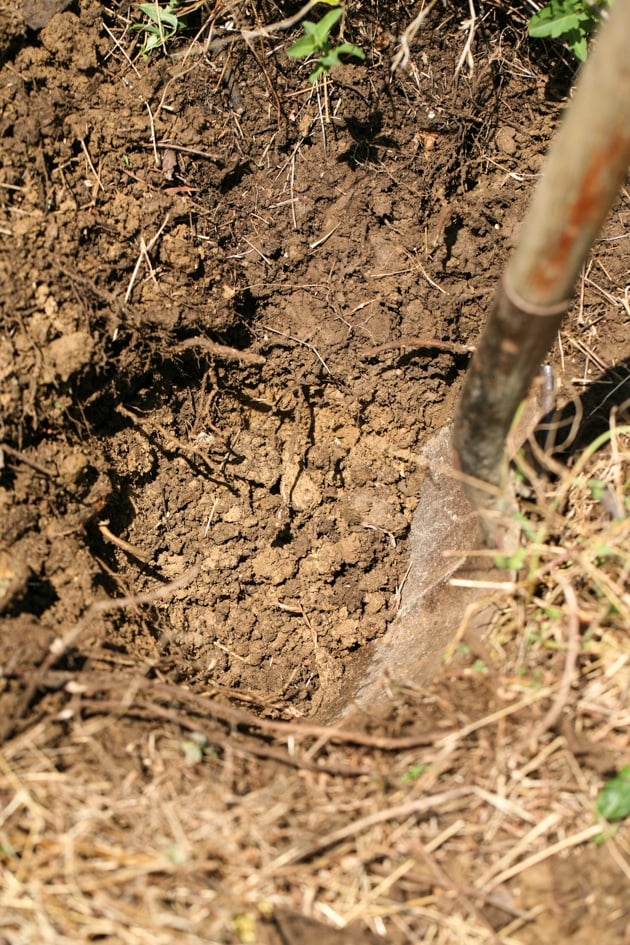
Use a shovel or a post hole digger to dig the planting hole. Dig a little deeper than you need and then fill the bottom of the hole with some loose soil. This will give the roots an easy start.
Since I only had one tree to plant, I simply placed it aside for a minute. If you have a few trees to plant and you remove them from their bags, make sure to place them in a bucket of water while you dig your holes so they don’t dry out.
Some people say that it’s good to soak the roots in water for at least an hour before planting. It’s probably a good idea but I didn’t do it. Actually, I didn’t even water my tree after I planted it. I try to work with nature to save me some work so I just choose a rainy day. A couple of hours after I planted the rain started pouring and did the watering for me.
Step 4 – Plant Your Fruit Tree…
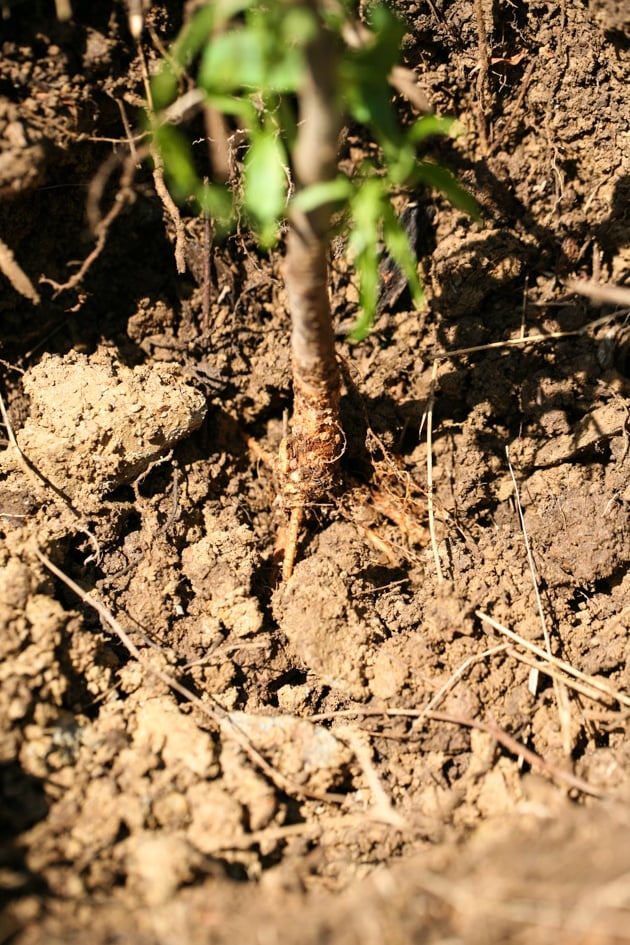
Once the planting hole is ready, place the tree in it and fill it back in with soil. If your tree has longer roots, make sure they are spread wide before filling the hole with soil.
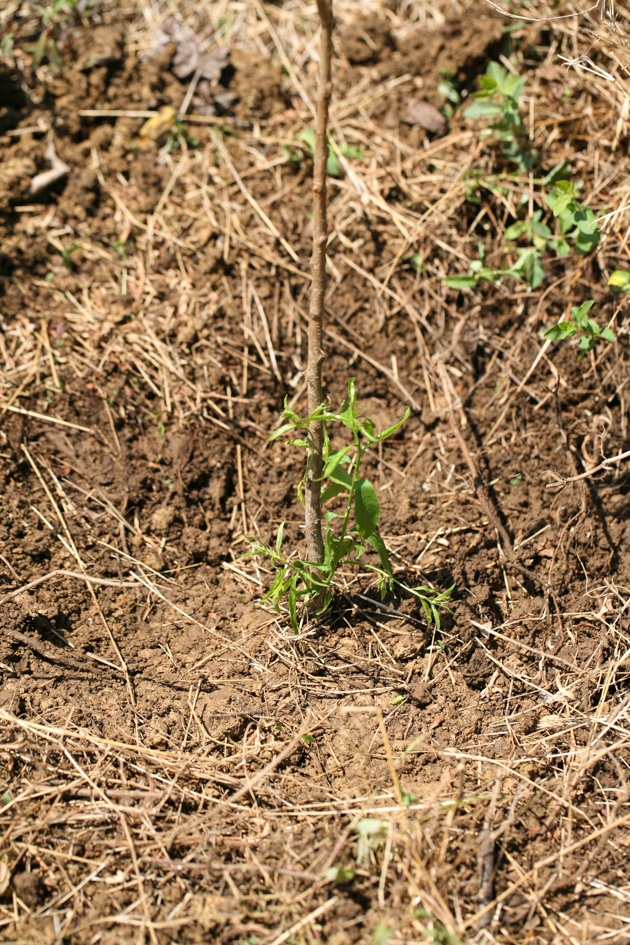
It’s a good idea to move the tree up and down a bit to remove air pockets and press the soil around it. Also, make sure to plant the tree in a way that it’s a bit lower than the soil around it. This helps keep water around the tree so it doesn’t run off. This is a good way to do it if you don’t have a watering system, at least for the beginning until the tree has established.
Step 5 – Support and/or Fence Your Fruit Tree…
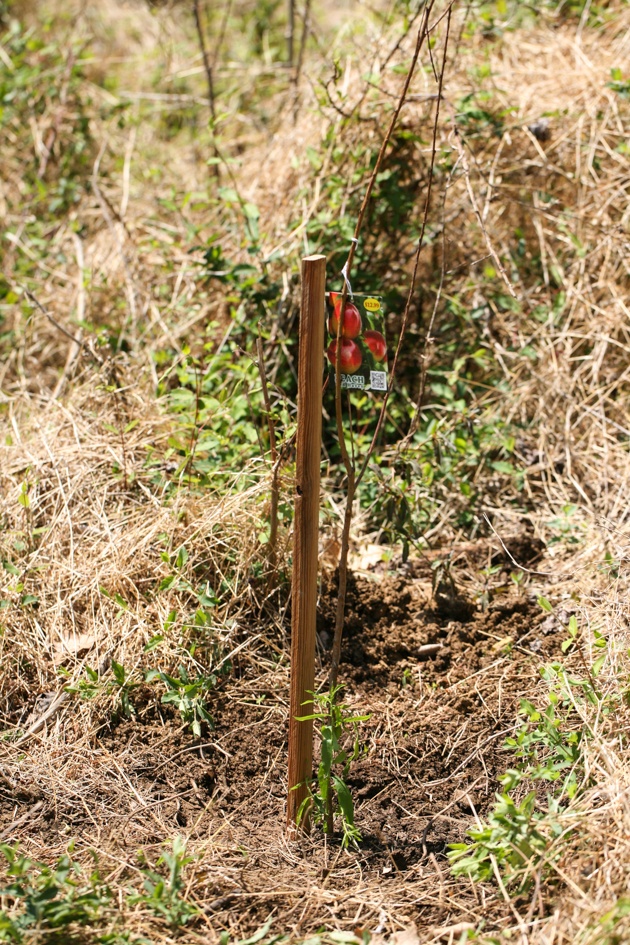
If you are planting a very young tree (or any size tree, really) it would benefit from a little support especially if you have days of very strong winds where you live. Use a sturdy stake and pound it into the ground by the tree about a foot deep.
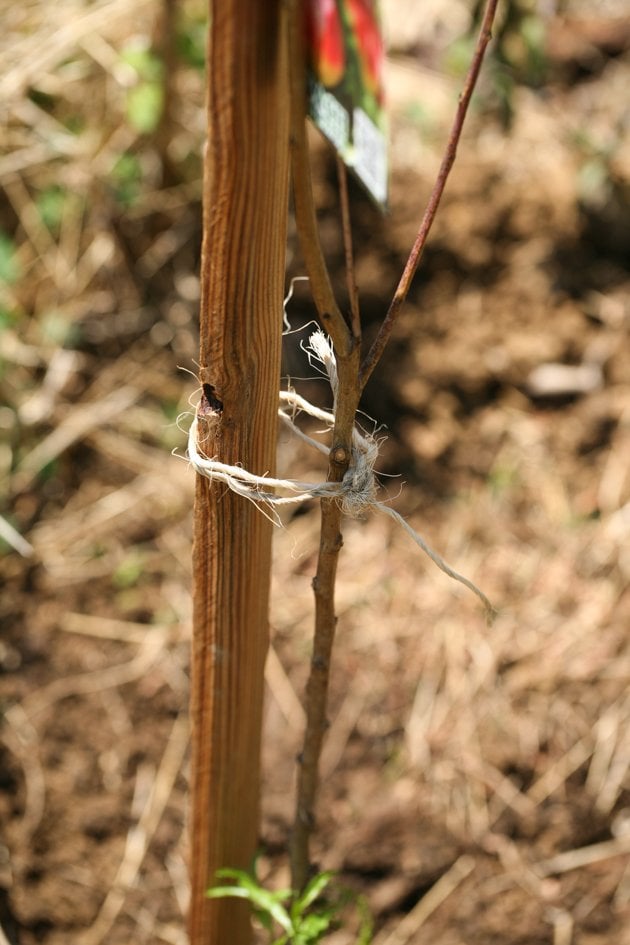
Then use twine to loosely tie the two together. This will also ensure that your tree grows straight up and doesn’t lean (which will prevent a lot of future problems!).
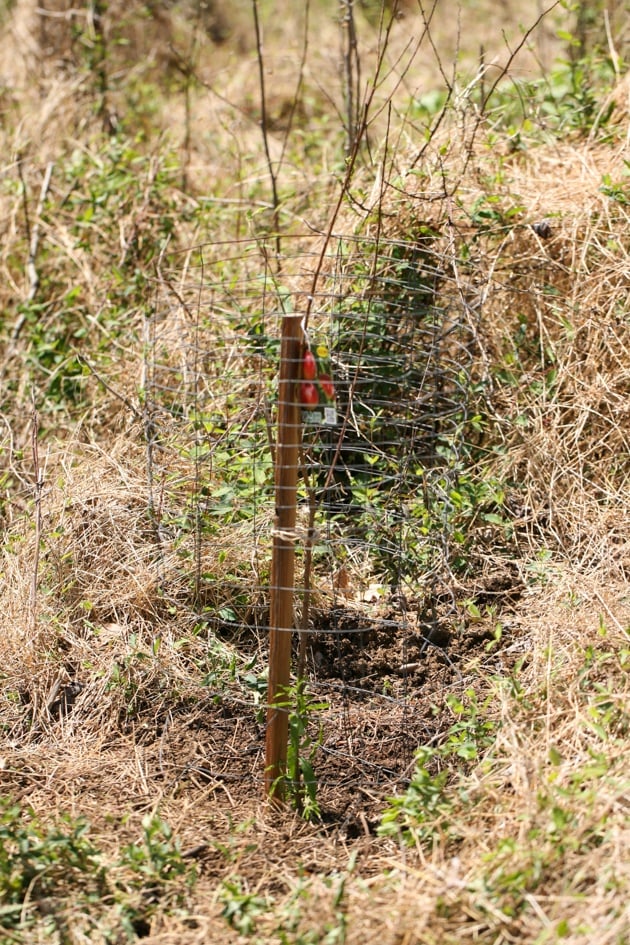
You might also decide to fence your tree. The fence can protect it from animals, humans, lawnmowers, and so on. Tip, for any homesteading project, always use woven wire. It holds together much better than the welded wire. I use landscape staples to hold the fence to the ground.
Caring For Newly Planted Fruit Tree…
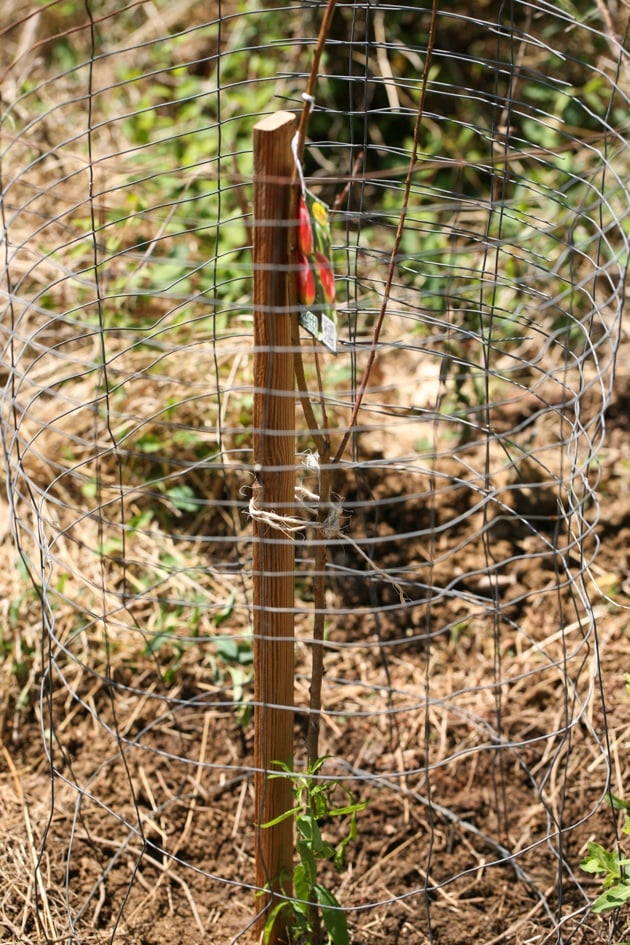
Water – for the next few weeks, until your tree has established, make sure to water it well. New trees need a lot of water in the beginning. Something like 5 gallons every 3-4 days. If it’s not raining enough make sure you keep watering your tree.
Fertilize – feel free to add compost around your tree. The reason that we didn’t add it in the planting hole is that we want the tree to have a reason to push its roots further and deeper. If it has everything that it needs right around it, it might not grow roots wide and deep enough which will result in a weak tree over time.
But you can definitely add compost around the tree and you can also water it with a water soluble fertilizer like fish emulsion.
Mulch – mulch is always beneficial! It helps keep the ground around the tree moist and promotes beneficial soil organisms. It also decomposes right on the spot and feeds the tree. My favorite mulch to use is dry leaves, straw comes right after.
Check the twine – lastly, make sure that you check the twine that you used to tie the tree to the support stake as the tree grows. Make sure it’s loose enough and doesn’t cut into the tree.
That’s it! Planting fruit trees is really a simple task, it takes much more time to choose them! I hope that this post gave you a better idea on how to do this and maybe a few tips that you didn’t know about.
As your fruit trees grow remember to prune your fruit trees every winter to promote better growth and fruit production in the summer. As your trees produce, remember that you need to thin the fruit on the tree! Also, we talked a little bit about grafting fruit trees above. If you want to understand it better, check out my post on 4 grafting techniques.

Hi! I’m Lady Lee. I help homesteaders simplify their homesteading journey while still producing a ton of food! I am a single mother of four, I was born in Israel and raised in an agricultural commune called a Kibbutz. Now I homestead in central NC.


